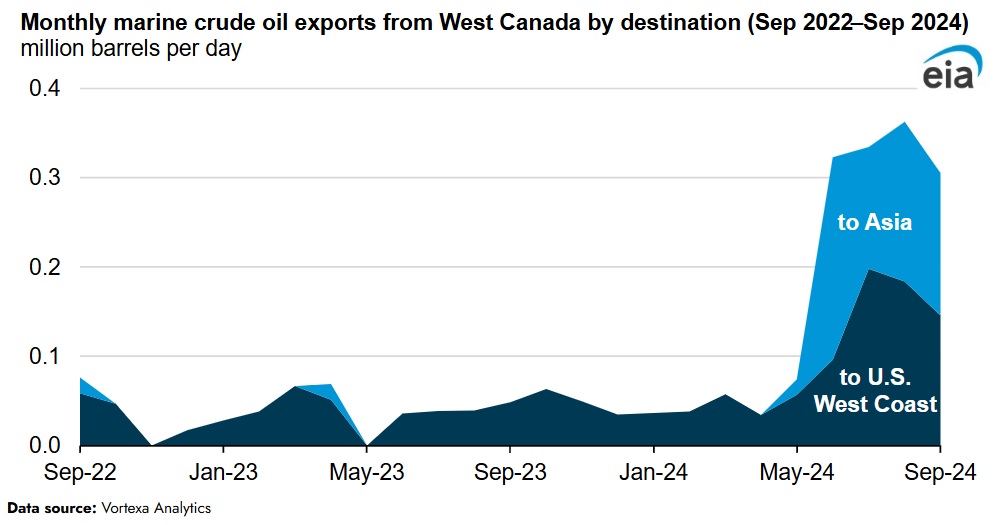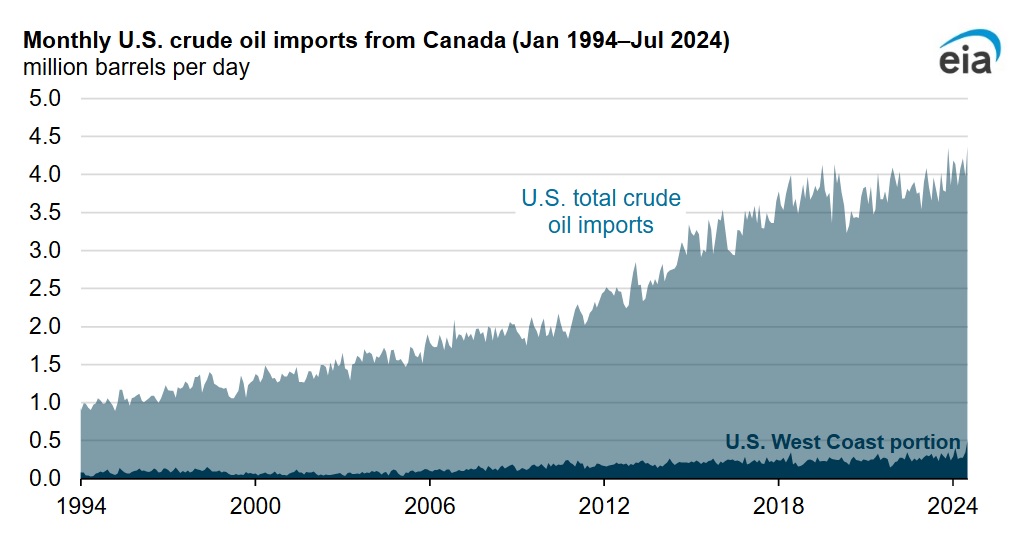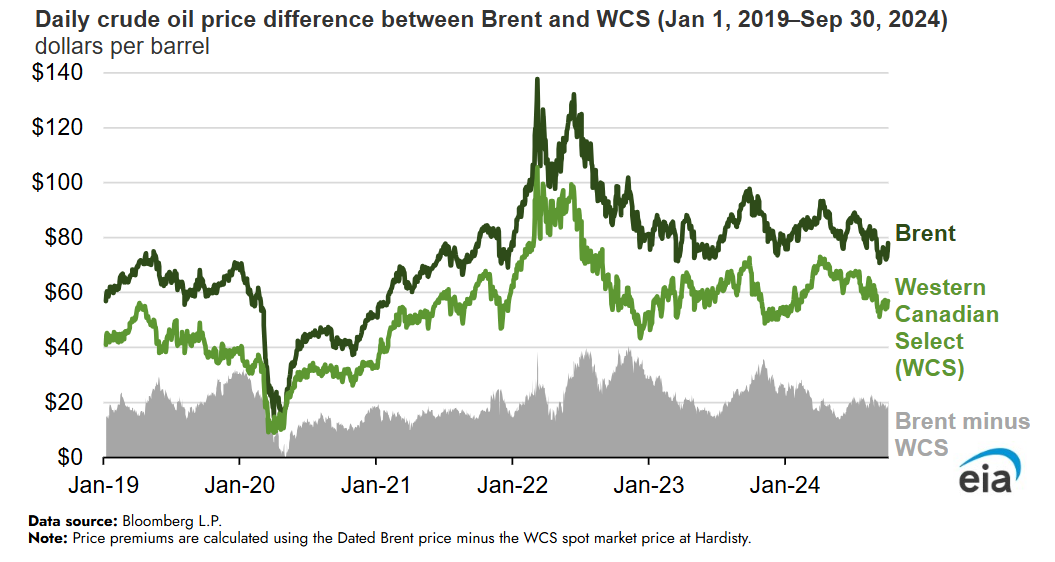December 2024, Vol. 251, No. 12
Features
Crude Imports from Canada Hit Record Level with TMX Expansion
By Energy Information Administration (EIA)
(P&GJ) — U.S. imports of crude oil from Canada reached a record of 4.3 MMbpd in July 2024 following the expansion of Canada’s Trans Mountain pipeline, according to recently updated supply data.
The Trans Mountain Expansion (TMX) tripled the line’s previous 300,000-bpd capacity when it began commercial operation in May 2024, bringing additional crude oil produced in the landlocked province of Alberta to Canada’s western coast, where it can be exported.
Historically, most crude oil exports out of Alberta have made their way either to refiners in the U.S. Midwest via pipeline or to the U.S. Gulf Coast by rail shipments, where they are either consumed by refiners or loaded onto tankers for seaborne re-exports. TMX was added alongside the previous Trans Mountain pipeline to move larger volumes of crude oil to the coast of British Columbia to then be exported directly to Pacific Ocean buyers.
Since TMX came online, early data indicate that refiners on the U.S. West Coast have been key buyers of the new export volumes. Between June and September, the U.S. West Coast accounted for just over half of all maritime crude oil exports out of Western Canada, with the rest going to destinations in Asia, according to data from Vortexa Analytics.
The U.S. West Coast imported 498,000 bpd of crude oil in July 2024, according to our EIA data, a record high for the region and an increase of 115% compared with July 2023.
The Western Canadian Select (WCS) crude oil spot price at Hardisty is used as a benchmark price to reflect regional crude oil production in Alberta. Historically, WCS spot prices are significantly discounted to other benchmarks because of WCS’s quality and the region’s landlocked geography, which limit its market.

Unlike Brent (the global crude oil benchmark grade), WCS has a higher sulfur content and a lower API gravity, and additional costs are necessary to move WCS from its inland pricing location to a coastal seaborne export location.
Since TMX came online in May, added takeaway capacity has had a mixed impact on WCS prices. In July 2024, the monthly average Brent price premium to WCS was $21 per barrel, $5/b higher than it was at the same time last year despite the additional capacity provided by TMX.
The August price differential was between the five-year (2019–23) average and last year’s level. The September average price differential, however, was slightly below the five-year average level. As of October 29, the Brent price premium to WCS for October is narrower by $10 per barrel compared with October 2023.
The WCS price differential to Brent and other benchmarks often widens in the fall, when Midwestern refiners reduce runs to undergo maintenance, limiting the pool of buyers from Alberta’s primary customers.
If the price differentials remain near current levels through the end of the year, it may suggest that the added TMX capacity has helped to insulate Canada’s crude oil producers from the operational decisions of refiners in the U.S. Midwest.







Comments